VCM-Photography
Welcome to VCM-Photography, a website designed and written
by myself Vernon Metcalfe to showcase my photographic passion for
military aviation and wildlife.
My aviation photography is orientated towards the dynamic aspect of military low flying,
where aircraft are captured flying landlocked against the countryside, rather than
airshow photography, where aircraft are captured against the sky.
My parallel passion is wildlife photography, encompassing all species, but with a preference
for the ‘Big Cats’, which has taken me to places such as India, looking for the
elusive tiger, Africa for the lion, leopard and cheetah and to the Brazilian Pantanal for the
iconic jaguar.
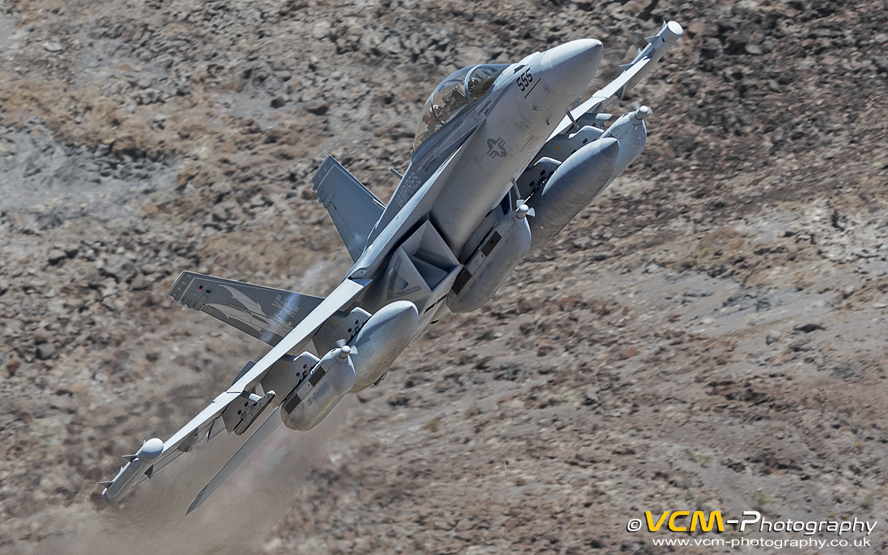 Boeing EA-18G Growler low-level in the Jedi Transition. California, U.S.A.
Boeing EA-18G Growler low-level in the Jedi Transition. California, U.S.A.
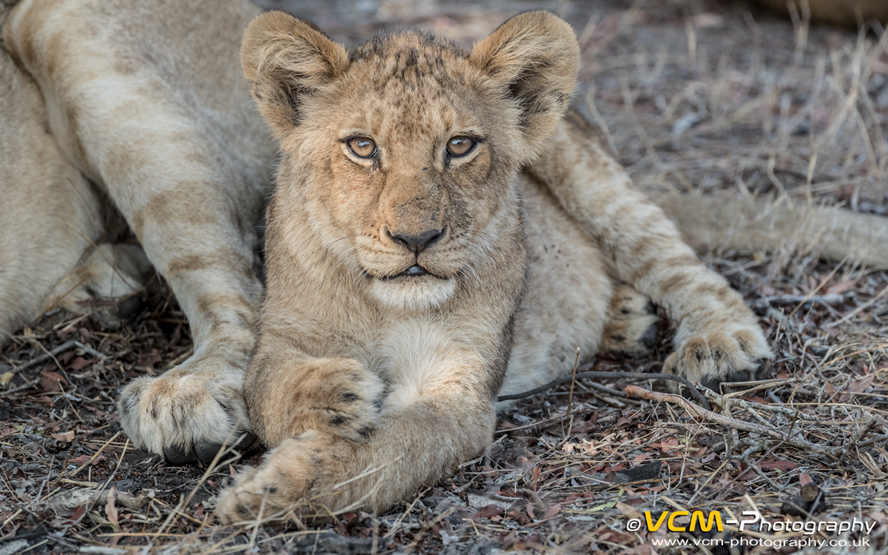 Nkuhuma Pride, lion cub. Sabi Sands, South Africa.
Nkuhuma Pride, lion cub. Sabi Sands, South Africa.
Copyright Notice
All applicable copyright laws pertain to all content on this site. Downloading, hot‑linking, copying
and/or distribution (by print, electronic media or other means) is strictly prohibited.
If you wish to purchase high quality images, or use any images for personal or commercial use please
email: vcmetcalfe@btinternet.com
Trip Report June 2024
In June I had my first U.K. military low flying photography trip of the year, with a five‑day visit to the
Lake District LFA17, in the hope of capturing photos of RAF and USAF military aircraft as they conducted their low‑level
training sorties.
Saturday 8th ‑ I made a return visit to the Yorkshire Aircraft Museum at Elvington, near York. I last visited the museum
in August 2020 but always planned to return as I was not happy with the photos I captured of some exhibits located outside, partly
due to their positioning with cars and other distracting features in the background, and secondly because of the weather and
poor lighting. Another incentive to visit was their latest acquisition of a SEPECAT Jaguar GR.1, XZ383 on display in the main hangar.
XZ383 had spent the last thirty‑seven years as a ground instructional airframe at RAF Cosford, but in early 2023 was moved
into external storage with other Jaguar airframes and put up for disposal. She was thankfully acquired by the museum and added
to their already impressive collection of Cold War aircraft.
 SEPECAT Jaguar GR.1 (XZ383 ‘AF’) in the main hangar at the Yorkshire Aircraft Museum, Elvington.
SEPECAT Jaguar GR.1 (XZ383 ‘AF’) in the main hangar at the Yorkshire Aircraft Museum, Elvington.
Sunday 9th ‑ As I was in the area, I decided to make a return visit to the South Yorkshire Aircarft Museum, Doncaster.
Like yesterday, the weather was ideal for outside photography and I was able to improve on photos I had previously taken of the
outside exhibits. Inside the main hangar, the museum had added a BAE Hawk T.1, XX238 to its collection, which like the other exhibits
was difficult to get a pleasing photo due to the aircraft being tightly packed together. To compensate for the difficult lighting
in the hangar, on some exhibits I did multiple photos of varying exposures and blended them together in post‑processing
(commonly known as HDR photography).
 BAE Hawk T.1 (XX238 ‘238’) in the main hangar at the South Yorkshire Aircraft Museum, Doncaster.
BAE Hawk T.1 (XX238 ‘238’) in the main hangar at the South Yorkshire Aircraft Museum, Doncaster.
Monday 10th ‑ Smaithwaite Banks Crag, Thirlmere Reservoir. At 08:15 when I arrived at my vantage point, I was greeted
by clear skies and good visibility, which remained for most of the day. The first aircraft to appear at 10:47 were two RAF
Eurofighter Typhoons from Coningsby, ZK376 and ZK258, closely followed at 10:50 by two USAF F‑15E Strike Eagles from
Lakenheath, 96‑0202 and 91‑0306 of the 492nd Fighter Squadron, ‘Madhatters’. The last aircraft to appear
in the morning at 11:36 was a Texan T.1, ZM325 from RAF Valley.
 View from Smaithwaite Banks Crag, looking over Thirlmere Reservoir towards Dunmail Raise and Loughrigg Fell beyond.
View from Smaithwaite Banks Crag, looking over Thirlmere Reservoir towards Dunmail Raise and Loughrigg Fell beyond.
At around 12:30 I observed three relatively slow‑moving aircraft passing over Loughrigg Fell, heading west, but they
were too far away to identify. At 12:49, the same aircraft which I could now see were Chinook helicopters passed through
Dunmail Raise and routed along Thirlmere Reservoir towards my location. The helicopters which were en route from RAF Odiham to
RAF Lossiemouth were in relatively close formation, so even with a 600mm lens I was able to capture all three in a photo. As they
passed, I only managed to get keepable photos of Chinook ZH889, as my panning technique was a bit rusty shooting at a shutter
speed of 1:125.
 Three Boeing CH‑47 Chinook HC.6's approach along Thirlmere Reservoir
Three Boeing CH‑47 Chinook HC.6's approach along Thirlmere Reservoir
The afternoon saw my first capture of a Lockheed Martin F‑35A Lightning II in the U.K. since July 2022, when two USAF
F‑35's of the 492nd Fighter Squadron, ‘Valkyries’ routed through. The lead aircraft, serial 19‑5486,
pulled up as it approached my location creating impressive vortices off its wingtips. The second F‑35 whose serial
I didn't see approached head‑on and pulled up, passing overhead my location. A few seconds after it passed I could hear
a noise like the crack of a whip which was the sound of the wake vortices generated by the aircraft ‑ very
impressive to hear. At 15:05 the ‘Madhatters’ appeared again, this time with a four‑ship of F‑15E
Strike Eagles. The lead aircraft, 91‑0605 was followed by: no serial observed, 96‑0202 and 97‑0220.
All four aircraft pulled up as they approached the end of the reservoir, rather than the normal practise of keeping
it low.
 F‑15E Strike Eagle (97‑0220 ‘LN’) of the USAF 492nd Fighter Squadron ‘Madhatters’.
F‑15E Strike Eagle (97‑0220 ‘LN’) of the USAF 492nd Fighter Squadron ‘Madhatters’.
The last pass of the day at 16:23 was by an RAF Airbus A4400M Atlas C.1, ZM418. The weather was starting to
deteriorate when I decided to leave the hill at 16:45. A wise choice, as there was a sudden downpour of hailstones, which
was quite sore on my head and face, followed by heavy rainfall. I had to take time and care walking down the hill, as the path
which is littered with stones could be very slippery. The area is also well known for ticks, especially at this time of year,
so I was constantly checking my clothing, especially after walking from the forest path through the woods to and from
my location.
Tuesday 11th ‑ Red Screes, Kirkstone Pass. A location I have not visited for quite a few years, so it was nice to try
somewhere different, but its not the easiest of climbs up to my chosen vantage point. The climb took a good fifty minutes
and my route took me over large areas of boulder scree where you had to tread carefully, as you could easily twist your
ankle or worse. The location is south‑east facing so the light can be an issue, but at this time of year the sun is high
above the horizon and there was quite a lot of cloud cover so that was not a problem. From my vantage point I had a clear view
of Morecambe Bay and the power station at Heysham. I could see the southern end of Windermere up to
Bowness‑on‑Windermere. My view of the lake north of Bowness‑on‑Windermere was blocked by a hill but
looking down Stock Ghyll (Kirkstone Road/The Struggle) I could see the northern end of the lake at Ambleside.
 The view from Red Screes, Kirkstone Pass, looking towards Windermere and Morecambe Bay beyond.
The view from Red Screes, Kirkstone Pass, looking towards Windermere and Morecambe Bay beyond.
At 08:45 I was in position and ready for any activity. At 09:48 I heard the noise of jets and observed an F‑15E
Strike Eagle routing north along Windermere and over Ambleside, presumably onto Dunmail Raise and Thirlmere Reservoir.
I later learned it was a four‑ship of F‑15E Strike Eagles. That is the only problem with this location. I have
cursed many‑a‑time I have missed aircraft because they have routed north, but I can't really complain because
‘Lady Luck’ does shine and I have had my fair share of aircraft routing my direction.
At 10:47 I observed something moving over Bowness‑on‑Windermere. Looking through my camera viewfinder I could
see it was an RAF Atlas. I was surprised, as I didn't hear anything on my scanner. Looking down Stock Ghyll towards
Ambleside I waited patiently for it to re‑appear at the northern end of the lake. Luck was with me this time, as the
aircraft was heading my direction up the valley from Troutbeck following the route of the A592. Aircraft taking this route
can occasionally bypass my location by carrying straight‑on over Troutbeck Tongue towards Threshwaite Mouth and down
the adjacent valley, appearing out of Pasture Bottom at Hartsop. But thankfully the Atlas, ZM421 from RAF Brize Norton,
followed the A592 taking the left‑right dogleg route of the road past my location and down towards Brothers Water
and Ullswater. First time I have photographed an Atlas from this location, and a nice start to the day.
 Airbus A400M Atlas C.1 (ZM421 ‘421’) follows the left‑right dogleg of the A592 at Kirkstone Pass.
Airbus A400M Atlas C.1 (ZM421 ‘421’) follows the left‑right dogleg of the A592 at Kirkstone Pass.
At 11:58 two Texan T.1's, ZM330 followed by ZM332 from RAF No. 72(F) Squadron, Valley, followed the same
route.
At 14:12, by pure chance (heard no communication over the scanner) I observed a Eurofighter Typhoon approaching
Ambleside over the northern end of Windermere. Before it disappeared from view I thought I saw it start to bank towards my
direction. Sure enough, a few seconds later the FGR.4, ZK375 from RAF Coningsby (callsign, Apollo 1) routed up
Stock Ghyll and did a spectacular pass. Another first for myself, as I have never photographed a Typhoon at this location.
I left the hill at 16:15 after a most enjoyable day.
Wednesday 12th ‑ Smaithwaite Banks Crag, Thirlmere Reservoir. I returned to the same location I visited on Monday
and at 08:15 I was in position ready and waiting. I did not have long to wait. At 08:45 two F‑35A's,
19‑5493 followed by 22‑5685 of the USAF 493rd Fighter Squadron ‘Grim Reapers’, approached along
Thirlmere Reservoir. The lighting was not ideal, as it was sunny with little cloud cover, but I got nice photos of the second
aircraft as it banked hard and produced vapour off its upper surfaces. Two F‑15E Strike Eagles, 96‑0206 and
91‑0301 from the USAF 492nd Fighter Squadron ‘Madhatters’ in the same flight followed seconds later.
Six minutes later at 08:48, two more F‑35A's from the ‘Grim Reapers’, 20‑5616 followed by an
airframe I didn't get the serial, also passed.
 Lockheed Martin F‑35A of the USAF 493rd Fighter Squadron ‘Grim Reapers’.
Lockheed Martin F‑35A of the USAF 493rd Fighter Squadron ‘Grim Reapers’.
A cracking start to the day and it continued with the following aircraft seen:
Airbus A400M Atlas C.1, ZM415 at 09:45. Two‑ship of unmarked Typhoon FGR.4's, ZK309 and ZK381 from RAF
Coningsby at 11:06. Single Typhoon T.3, ZK381 of RAF No. 29 Squadron, Coningsby at 11:21. Two RAF 41 Test & Evaluation
Squadron marked Typhoon FGR.4's, ZK315 and ZK379 at 12:35. Airbus A400M Atlas C.1, ZM420 at 12:36 and the last
pass of the day by a single Texan T.1, ZM324 of RAF No. 72(F) Squadron, Valley at 14:01.
I left the hill at 16:30.
Thursday 13th ‑ The weather forecast today was looking unsettled, with a high possibility of rain after lunchtime.
‘You have to be in it to win it’ as the saying goes, so I decided to venture out. I didn't feel like a hard
climb today, so I walked to Silver Point, overlooking Ullswater. When I arrived on location at 08:15 and looked towards
Kirkstone Pass (direction from which aircraft approach) the hilltops were clear and the visibility was good.
By 09:45 this began to change as low cloud started to obscure the pass. As this would prevent aircraft routing through,
I decided to relocate to Coppice Corner on Thirlmere Reservoir. I arrived at Coppice Corner at 11:00 and stayed till
12:45, when as forecast it started to rain. I left the location with no aircraft seen.
Friday 14th ‑ My original plan was to visit the hills today, but looking at the weather and what the forecast
predicted I decided to travel home. On social media people had reported of aircraft routing through LFA17, but I have
seen no photographs, so I assume they were not flying low, or like myself no one had ventured up the hills.
Photographs from my trip can be viewed at:
2024 ‑ UK Low Flying.




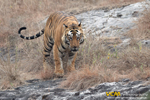
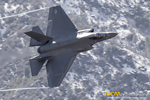
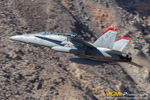
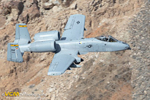
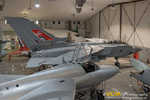


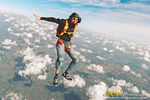

 Boeing EA-18G Growler low-level in the Jedi Transition. California, U.S.A.
Boeing EA-18G Growler low-level in the Jedi Transition. California, U.S.A. Nkuhuma Pride, lion cub. Sabi Sands, South Africa.
Nkuhuma Pride, lion cub. Sabi Sands, South Africa. SEPECAT Jaguar GR.1 (XZ383 ‘AF’) in the main hangar at the Yorkshire Aircraft Museum, Elvington.
SEPECAT Jaguar GR.1 (XZ383 ‘AF’) in the main hangar at the Yorkshire Aircraft Museum, Elvington. BAE Hawk T.1 (XX238 ‘238’) in the main hangar at the South Yorkshire Aircraft Museum, Doncaster.
BAE Hawk T.1 (XX238 ‘238’) in the main hangar at the South Yorkshire Aircraft Museum, Doncaster. View from Smaithwaite Banks Crag, looking over Thirlmere Reservoir towards Dunmail Raise and Loughrigg Fell beyond.
View from Smaithwaite Banks Crag, looking over Thirlmere Reservoir towards Dunmail Raise and Loughrigg Fell beyond. Three Boeing CH‑47 Chinook HC.6's approach along Thirlmere Reservoir
Three Boeing CH‑47 Chinook HC.6's approach along Thirlmere Reservoir F‑15E Strike Eagle (97‑0220 ‘LN’) of the USAF 492nd Fighter Squadron ‘Madhatters’.
F‑15E Strike Eagle (97‑0220 ‘LN’) of the USAF 492nd Fighter Squadron ‘Madhatters’. The view from Red Screes, Kirkstone Pass, looking towards Windermere and Morecambe Bay beyond.
The view from Red Screes, Kirkstone Pass, looking towards Windermere and Morecambe Bay beyond. Airbus A400M Atlas C.1 (ZM421 ‘421’) follows the left‑right dogleg of the A592 at Kirkstone Pass.
Airbus A400M Atlas C.1 (ZM421 ‘421’) follows the left‑right dogleg of the A592 at Kirkstone Pass. Lockheed Martin F‑35A of the USAF 493rd Fighter Squadron ‘Grim Reapers’.
Lockheed Martin F‑35A of the USAF 493rd Fighter Squadron ‘Grim Reapers’.